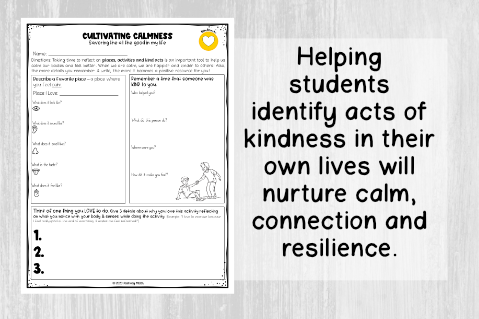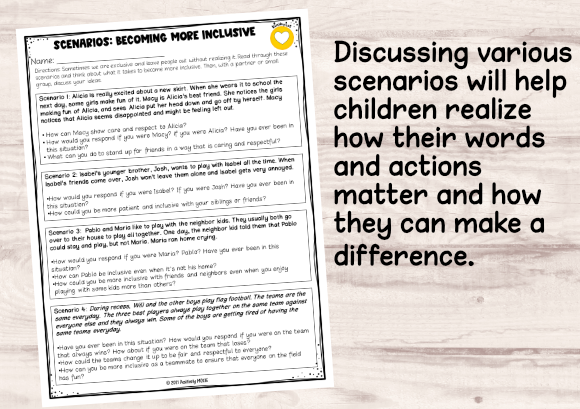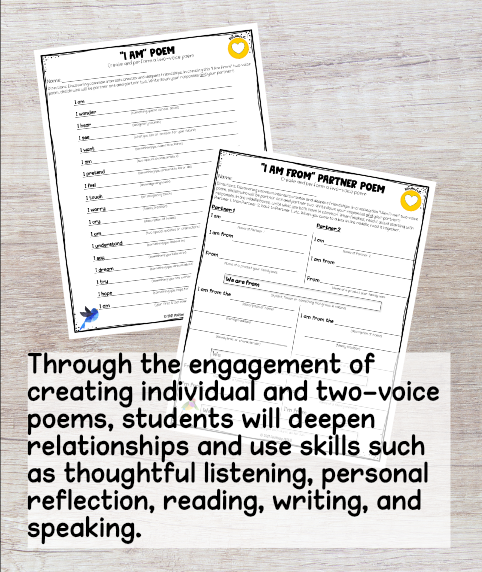Are you looking for ways to boost kindness and empathy in kids? These five kindness practices can help! Children’s bodies and brains strengthen through kindness by promoting a sense of calm, connectedness, and a sense of purpose. Acting with kindness also activates the emotional regions of the brain because children who are kind can also better manage their emotions to navigate the ups and downs of life.

Kindness is a key component of positive psychology, in which we focus on strengths to promote resilience and well-being of the mind and body. Tapping into the latest brain research, our Kindness Unit teaches students how to coach their own brains fostering courage, confidence and connection leading to strong learning outcomes, meaningful relationships and the resilience to handle life’s bumps.
Teaching children kindness practices will them develop empathy, connectedness and resilience. By practicing kindness, students will know that it matters to us and it will lead to a healthy and compassionate culture in the classroom and beyond.
Research shows that adult actions promoting kindness in a school help increase students’ motivation for engagement and learning. It sparks our physical and emotional well-being. Additionally, kindness activates specific regions of our prefrontal cortex – the same regions of the brain that are associated with emotions. Students who are kind can better manage their emotions to navigate the ups and downs of life. Try these simple kindness practices to foster more health and happiness.
1. Cultivate Calmness
A key concept of kindness is that it comes from within and that we can cultivate kindness. Children who experience positive emotions, such as love and belonging, are better able to express kindness to themselves and others. Research also supports the idea that people who are generally happy are kinder and more compassionate. The activities in our lesson, Cultivating Kindness, allow students to experience kindness from the inside-out. Directing attention to positives sensations can have an immediate calming effect on the nervous system in the body and lays the foundation for cultivating attention as a skill. In essence, we are more able to be kind to ourselves and others when we feel a sense of calm in our minds and bodies.

2. Practice Random Acts of Kindness
Acts of Kindness make life better for everyone! Our Random Acts of Kindness lesson gives students multiples opportunities to express kindness through their words and actions. It also helps them begin to notice the everyday acts of kindness all around them that they might not typically notice. Eventually they will get better at recognizing the acts of kindness all around them and this will strengthen their propensity for kindness. The more children notice and practice acts of kindness, the more likely they are to automatically respond with kindness in various situations!
3. Model and Expect Inclusiveness

We all want to feel like we belong. A sense of belonging is the degree to which we feel respected, accepted, and supported. When students feel a sense of belonging, they become more motivated and attentive in class – increasing their effort, persistence, and achievement. When students don’t feel like they belong, they withdraw and disengage. Our Kindness lesson, Becoming Inclusive, encourages students to reflect on how their own words and actions affect other kids’ sense of belonging and to discover what inclusiveness looks and feels like, and how to create more of it.
4. Get Creative
Writing poetry generates reflection and conversation between and among students. In our Kindness lesson, “I Am” and “I Am From” poems, students may create or deepen existing relationships using skills such as thoughtful listening, personal reflection, reading, writing, and speaking.

5. See Other Perspectives
Being able to take someone else’s perspective lays the foundation for kindness and empathy. It is imperative that children learn to “step into someone else’s shoes.” Our Kindness Lesson Seeing Other Perspectives shows how our perception of the world affects how we act and feel about other people and events. In Seeing Other Perspectives, students will analyze perspective/point-of-view using artful thinking strategies. Artful Thinking techniques are a powerful way to analyze our world. We can use artful thinking techniques with images and people in our lives to enhance our relationships.

You may find these and many other valuable for students in our TpT Store. Teaching students how and why to be kind will give them the skills they need to foster well-being and happiness for a lifetime.

